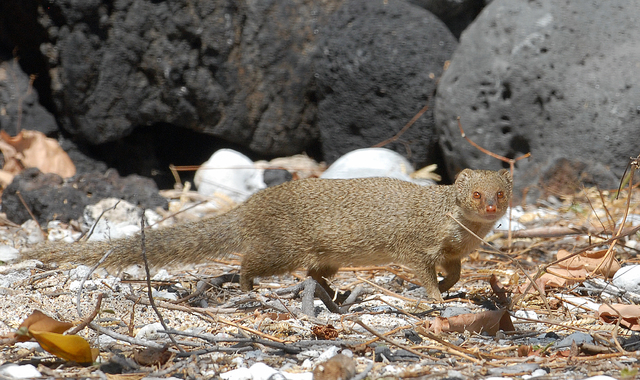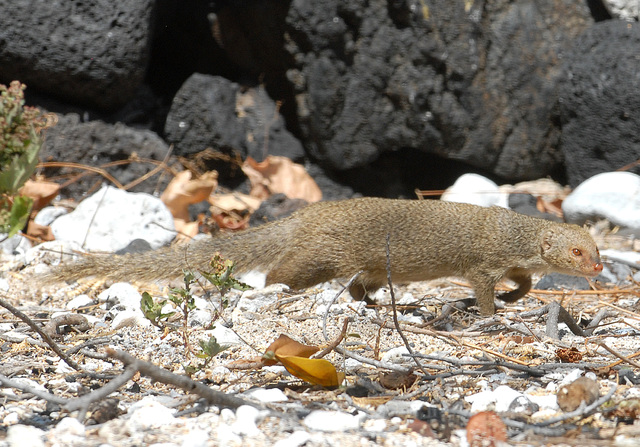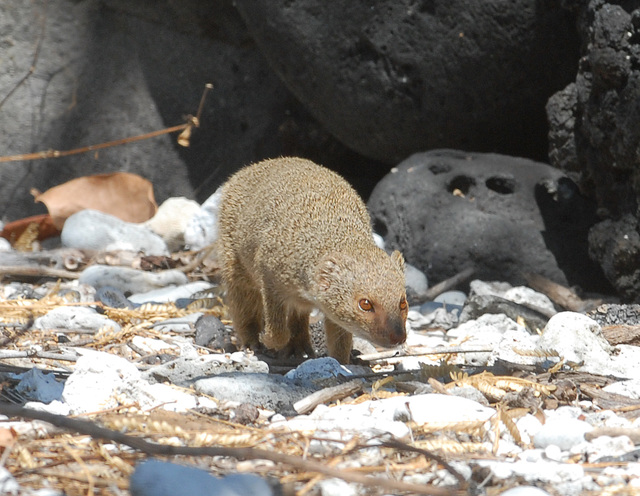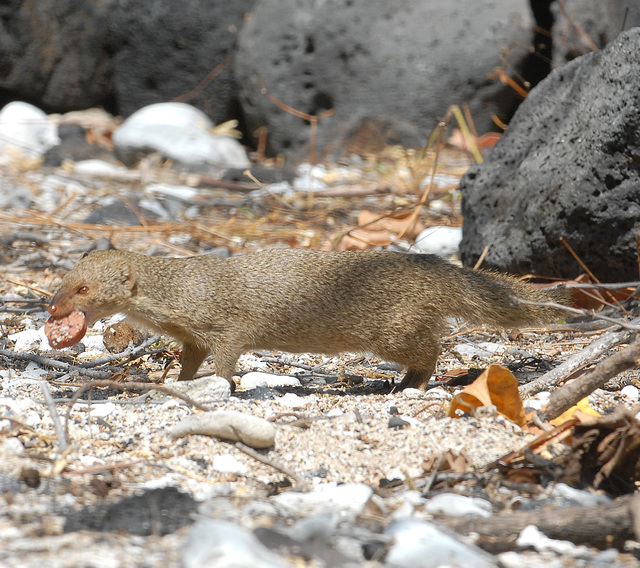KAILUA-KONA — It’s high time to take expanding mongoose and rodent populations in hand before they destroy more of a fragile native landscape. ADVERTISING KAILUA-KONA — It’s high time to take expanding mongoose and rodent populations in hand before they
KAILUA-KONA — It’s high time to take expanding mongoose and rodent populations in hand before they destroy more of a fragile native landscape.
That’s the gist of a new joint state and federal proposal to launch a comprehensive control or eradication of the invasive animals from native ecosystems. The state Department of Land and Natural Resources and the U.S. Fish &Wildlife Service will be sitting down with the public in the first half of next month to hear what people have to say about the invasive species, their impacts and the best ways to control their populations.
The agencies are considering expanded use of poison, trapping and other measures that have been effective in other regions of the globe that have similar problems. The rodenticides — diphacinone, chlorophacinone, brodifacoum — could be broadcast from baiting stations on the main islands and from the air on the northern uninhabited ones, under scenarios that will be studied for their effectiveness and for their impact on soil, animals and water.
The information will be used to help prepare an environmental impact statement. The state first began using diphacinone to try to control mongooses in the early 1990s, and the two additional rodenticides could offer more tools in the battle.
Whatever the course that is eventually decided upon, something has to be done, says a consortium of dozens of invasive species groups, watershed partnerships and other environmental organizations around the state.
“Rats, mice, and mongooses are serious threats to Hawaiian plants and animals. Rats are even capable of destroying entire ecosystems,” said Marjorie Ziegler, executive director of the Conservation Council for Hawaii. “We have the tools to control predators in conservation areas. This work must be done carefully, but if we do not take a more aggressive approach, we will continue to lose rare and endangered species. The status quo is simply not acceptable.”
The state and federal agencies acknowledge they have a huge task ahead, noting that control efforts to date have been dwarfed by geography and the enormous scale of the problem, with the rodents and mongooses distributed throughout populated and wild areas of the state. Current eradication efforts scattered around the islands use live and kill traps and diphacinone in bait stations.
Cole Cornelius, a retired biologist who studied population dynamics and now lives in Hawi, said long-term solutions will be found only through biocontrol of the invasives through bioengineering.
“Personally, I don’t believe they could begin to control with poison and traps on an island this size,” he said. “I think the only way to do it would be gradual genetic modification to the point where they could no longer reproduce.”
Rodents and mongooses lay waste to native bird populations by munching eggs and hatchlings and even do the same to turtles. The predatory activity has been implicated in the extinction of numerous species and in the struggles of native bird populations, an impact that has been compounded by the spread of avian malaria.
The potential loss of huge swathes of habitat from rapid ohia death fungus poses a new threat to the birds, as well.
“Plants and animals are heavily impacted by rodents and mongooses,” said Patrick Chee, small animal control planner for the state Division of Forestry and Wildlife. “They can go after the animals while they’re sitting on a nest, or after the eggs and the chicks. And the plants are just there to be munched down.”
The rodents damage native plants and are vectors for the spreading of diseases like leptospirosis and rat lung worm, a debilitating disease of the central nervous system spread by rats and slugs.
“We really want to hear what communities would like us to consider in this analysis, including what methods should be considered and what are some alternatives,” said Mary Abrams, field supervisor for the U.S. Fish &Wildlife Service, in a statement. “Methods to control rodents and mongooses in urban and agricultural areas currently exist, but those tools and methods aren’t always effective or available for use in conservation areas.”
“This process will look at rodent and mongoose control efforts worldwide, and document the most appropriate ones that could be used in Hawaii,” Abrams said.
The first talk story session will be held March 14 at the University of Hawaii-Hilo College of Tropical Agriculture and Human Resources, Komohana Research and Extension Center, conference rooms A and B. On March 15, the public will also be heard at the West Hawaii Civic Center community meeting hale. Both meetings are from 6 p.m. to 8 p.m.
Comments can also be submitted online and via mail and email.
Info: https://removeratsrestorehawaii.org/
https://www.regulations.gov/#!documentDetail;D=F
WS-R1-ES-2015-
0026-0019






